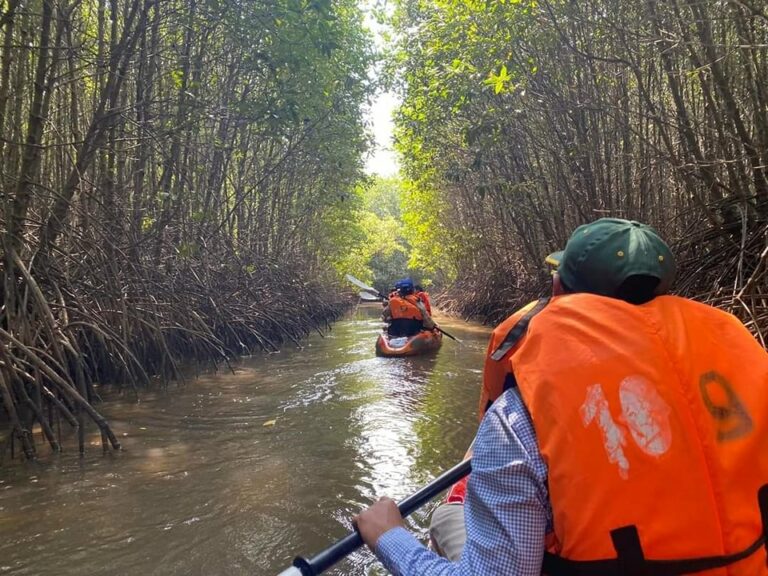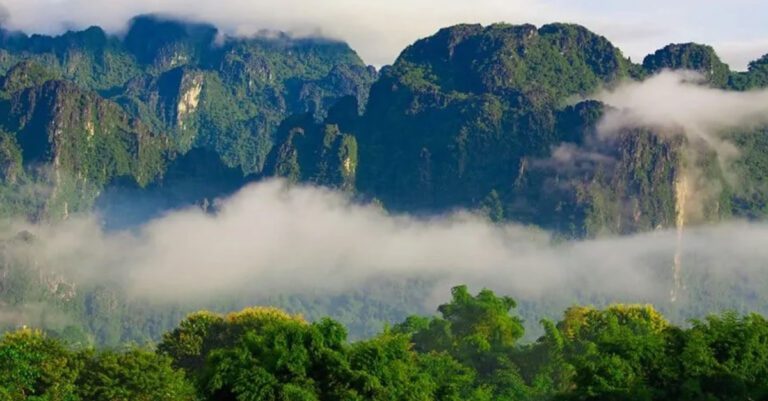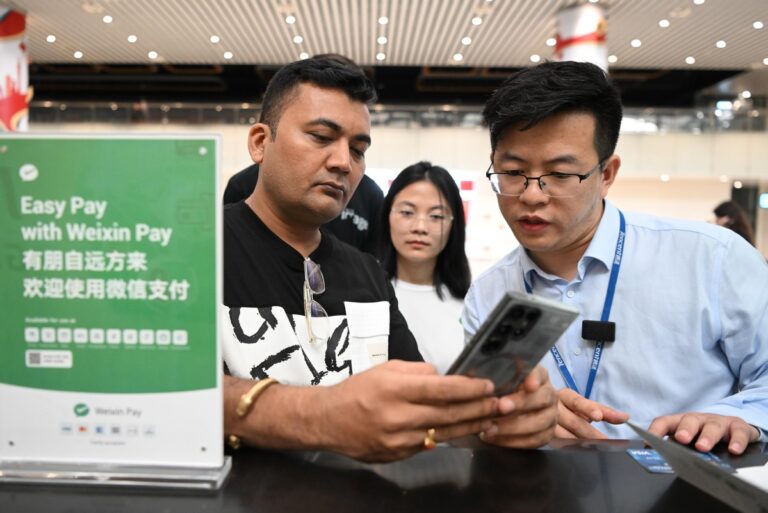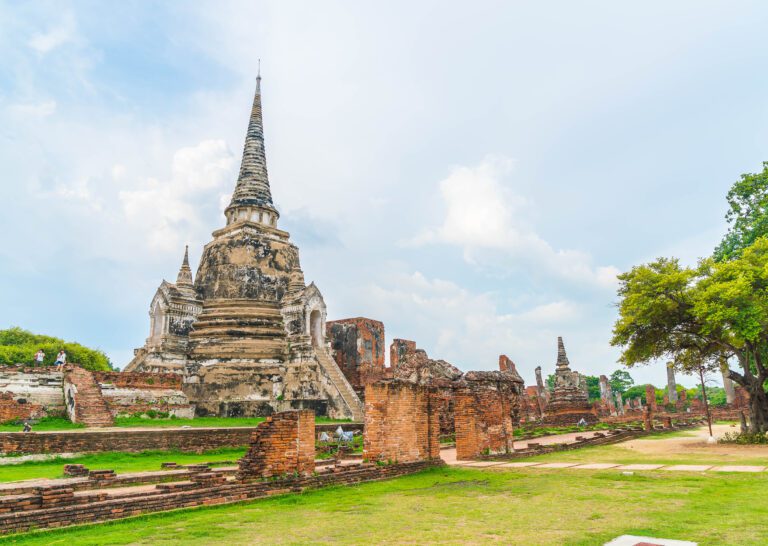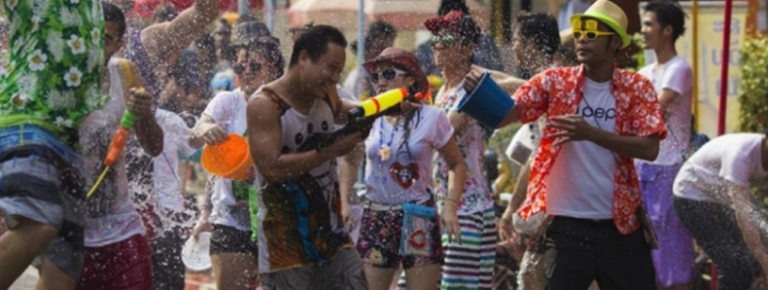Cambodia’s honey industry goes back to the dawn of civilisation; the Khmer used to collect wild honey from forest hives, a practice that is still done in Mondulkiri today.

Despite these cultural roots, today’s Khmer consumers are suspicious of the honey on the market, due to the proliferation of fake or adulterated honey – a situation that Man Rathea and QBEE are hoping to fix.
Her faith in Cambodian beekeepers led Ms. Rathea to establish QBEE, a retailer of pure honey and honey-based products based in Siem Reap. QBEE works closely with beekeepers from all across Cambodia, selecting only the highest-quality honey from these remote communities to sell in her Siem Reap shop, popup stores, partnered cafes, and online.
We talked to Ms. Rathea about how QBEE empowers Cambodian beekeepers and promotes Cambodia’s world-class honey to an international audience.
Can you tell me about the journey that led you to start QBEE, and market honey products from Cambodia?
I began as a vegetable seller on Psar Dam Krolanh, in Siem Reap. A honey expert approached me and asked if I would be interested in also selling honey. So I agreed to sell the honey; I bought 10kg of honey and sold it cheap to Khmer customers.
However, Khmer customers didn’t trust the honey because unfortunately, so much honey on the market is fake! So it took me a long time to sell, about six months to sell it all. I wasn’t keen to sell more honey because it was difficult to sell, but the beekeepers asked me to keep selling because they could not do it themselves.
So for the sake of the beekeepers, I kept selling honey. And slowly, more people began to buy from me. Then COVID came and everything slowed down! But people wanted the honey because it is like a safe natural medicine for the body. So I actually started selling more honey, and from here I started QBEE. Today, the honey market in Cambodia is well supported by the Khmer people.

Where do you source your honey? Do you source honey from different regions – and if so, are they different (in taste or usage) from region to region?
QBEE honey comes from all over Cambodia. Different regions produce different flavours depending on the type of nectar available.
For example, our Hevea honey comes from Tboung Khmum province; the nectar comes from the young leaves of the rubber tree which is collected by farmed bees. Our Mondulkiri honey, on the other hand, comes from the flowers of the forest which is collected by wild forest bees. Both have different colours and different flavours.
What is the preferred process of harvesting honey in Cambodia – is there a traditional way of beekeeping, or do you adopt Western practices of beekeeping?
We do both in Cambodia. Some honeys are gathered from bee farms with bee boxes, like those from Tboung Khmum. And some is gathered traditionally from the forest, like those from Mondulkiri.

How do you involve the local community in your beekeeping and product development? How has QBEE contributed to their livelihoods?
We work with our suppliers to make sure that, when they collect the wild honey, they do it without destroying the beehives. This ensures that the collectors always have an income stream from the continual supply of honey from the wild bees.
We also work with our bee keeping farmers – we conduct tours of their farms for tourists, which adds value and income for their families.
How is the honey you produce used in natural skincare products? Can you give examples of some products?
QBEE partnered with Chiang Mai University to create our skin care range of Face Serum and Face Cream which are both based on the healing properties that honey offers as a completely natural product.
For example, the enzymes in honey act to moisten skin and stimulate healing. This makes honey a safe alternative to the many types of skin care that are not completely natural based.
What can tourists in Siem Reap expect to do when they visit your store in Siem Reap? How do you introduce them to Cambodian honey, its products and benefits?
At our QBEE shop in Siem Reap, we offer tastings of all our products and share our knowledge on where, how and who is involved the entire honey collecting process. This introduces tourist to the many different flavours of Cambodian Honey.
We also tell them about the benefits to your health from eating our honey. We also offer tours of the bee farms and of the forest rafters of wild bees.
Are there any challenges you face in maintaining a balance between running a profitable business and supporting community development?
No, because they are both reliant upon each other for success. It is in both our interests that we work together to ensure that tourists get a great and real experience of the Cambodian Honey collection process. This way, we create interest for each other and support each other.
It also creates a transparent and honest experience for everyone, showing others how our honey varieties are real and pure.
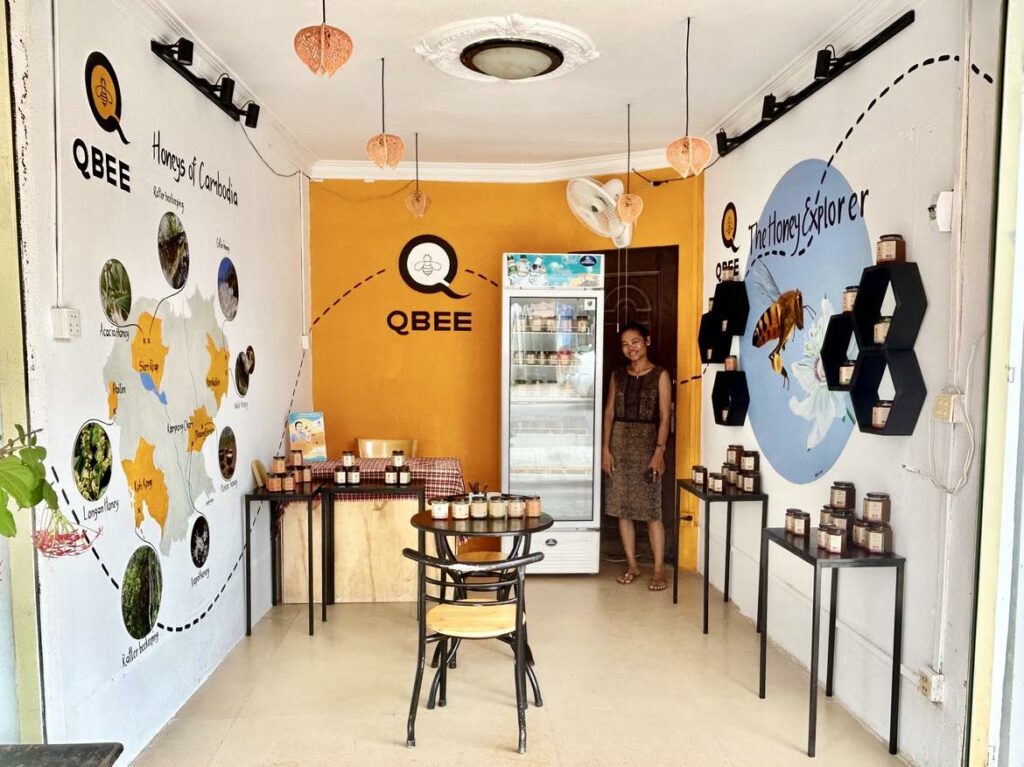
Is climate change also affecting your business?
We are concerned that seasonal extremes will affect the bees and stop them producing honey. Too much heat, rain or wind can kill the bees. But we work with our bee keepers to help, as they move the bees around to make sure that they have good conditions for living and producing honey.
Looking to the future, how do you plan to expand your business while continuing to support the local community and environment?
I would love to get QBEE to a position where we can export Cambodian honey to the world. This would create more jobs for our local community. People would also see the benefits in making sure the environment is protected, not just for the bees, but also for their income and their families well-being. We all will benefit as we are all a part of the honey production ecosystem!
For more on QBEE’s products, mission and visitor experience, visit the QBEE Facebook page.

